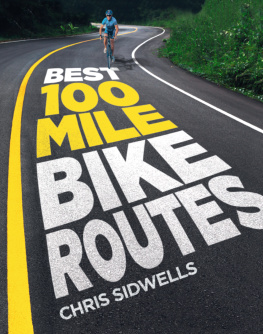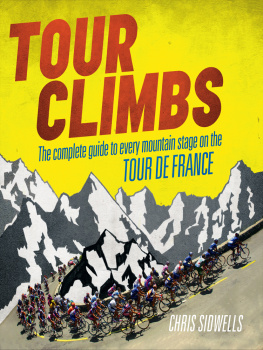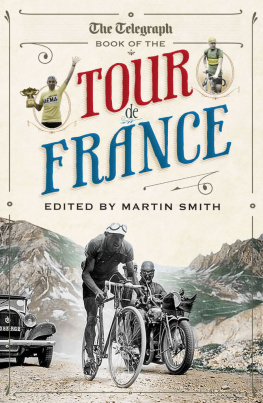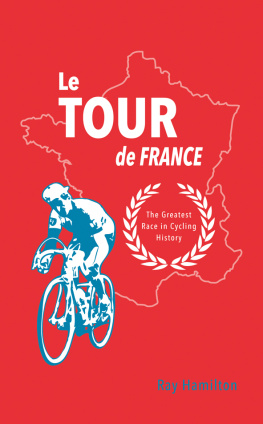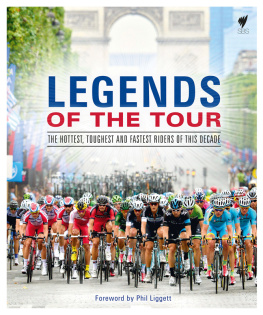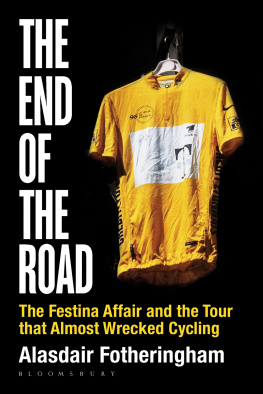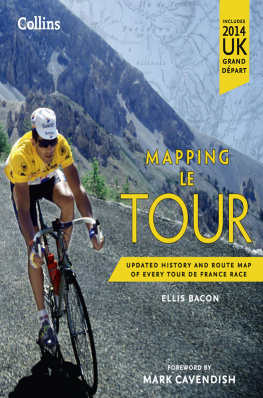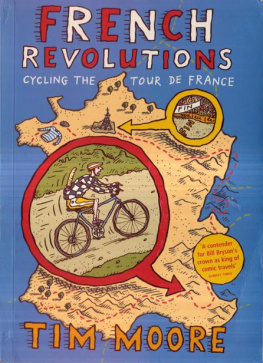The noise of a racers feet scrapes out of the darkness as he drags his bike to a halt outside Fougres in eastern Brittany. Its September 1891, the racer is Charles Terront, one of 206 pedalling pioneers who set out from Paris nearly two days ago. They are racing non-stop from the French capital to Brest, the Atlantic port at the tip of the Breton peninsula, and back to Paris again, a distance of 1,200 kilometres.
Fougres is a control town. Terront must stop at a lamp-lit huddle of officials, have his race card marked with the official stamp, then hurtle off into the night again. Six hours will pass before his nearest rival, Jacques Jiel-Laval, arrives here, and Terront will be even further ahead by the time he reaches Paris, where he will win in a time of 71 hours and 22 minutes.
ParisBrestParis was the turning point in the early history of the bicycle. A steerable wooden-framed, two-wheeled vehicle was invented in 1817, but it was scooted along the road by the riders feet. In 1861 a Parisian coach-builder, Pierre Michaux, attached pedals to the front wheel of one of these hobby-horses and called his invention the vlocipde .
That was the first bicycle, and it was quickly followed by the first bicycle race. The place was the Parc St Cloud, Paris, the date was 31 May 1868 and the winner was an Englishman called James Moore. Later the same year Moore won the first race on the open road, 120 kilometres from Paris to Rouen. More road races followed and banked tracks called vlodromes were built for racing in front of huge crowds.
Bike racing became very popular, but cycling itself was less so. Then came ParisBrestParis, and it finally underlined the possibilities of this new machine. The safety cycle had been launched in England by James Starley in 1885. It was a chain-driven bike, made from metal with a double-triangle frame, not so dissimilar to bikes today. Terront used a safety cycle to win this great race.
The race organiser, Pierre Giffard, was a committed cyclist who was evangelic in promoting cycling and the editor of one of the first bicycle publications, which was called Le Vlo . He fervently believed in the bike as a form of recreation and transport, and was determined to make others see the potential of a machine that could be ridden such vast distances.
Ninety-nine riders finished ParisBrestParis behind Terront, the slowest only just beating the cut-off time of ten days, but that wasnt the point. The important thing for Giffard was that they all came through unscathed, confounding prevailing medical opinion that human beings trying to cover such huge distances by their own power would damage themselves and maybe even die.
After the race Giffard wrote in the editorial of his magazine: For the first time we saw a new mode of travel, a new road to adventure, a new vista of pleasure. Even the slowest of these cyclists averaged 130 kilometres a day for ten days, yet they arrived fresh and healthy. The most skilful and gallant horseman could not do better. Arent we on the threshold of a new and wonderful world?
Actually, we were. Young, upper-class men had already taken to the bicycle, showing off their skills on the road and racing on flat cinder tracks all over Europe, similar to the ones they used for running races. They rode ordinary bikes, or penny-farthings, clumsy great things with one huge wheel in front and a tiny balancing one behind it. Penny-farthings were difficult to ride because the pedals were fixed directly to the giant front wheel. One pedal turn equalled one turn of the wheel, so to go faster the wheels had to get bigger. Not everyone could ride a penny-farthing.
The safety cycle changed that. Chain drive to the rear wheel meant gearing, so the rear wheel revolved several times for each revolution of the pedals. With this set-up wheels could be of equal sizes and the rider wasnt perched high up in the sky. He or she could stop, still seated in the saddle, and place both feet on the ground.
Anyone could ride one of these bikes and, because they were much cheaper than a horse, the bicycle became the first truly accessible mode of transport for working people. Before the bike most members of the working class were born, grew up and died without straying far from their village or part of town. Steam trains opened up the possibility of excursions, but these were expensive and had to be saved for and planned, and even then you could only go where the train went.
The bicycle meant freedom. Working people had never experienced anything like it. Bikes gave them mobility, and as the twentieth century approached, a huge market began to grow. To tap into it, manufacturers needed to show that their bikes were the best, the most durable, and long-distance bike races were the best place to do it. Bike racing had only just found its feet as an amateur sport; now it was going professional.
Those early pros were a tough breed, not that they are softies now. Off their bikes modern pro racers will whinge and grumble about not being on form, or having this pain or that ache, but on their bikes they are a different breed. Pro bike racing is a hard, uncompromising, uncomfortable, often brutal calling. Even the best lose more often than they win. All of them will crash or suffer hardships, but they keep coming back for more. Its always been the same, but today no one ever endures what the first professionals faced in every race.
ParisBrestParis was the longest road race in this new sport, so long that after the first one they didnt organise another for ten years, but by the late 1890s there were several other long-distance races: BordeauxParis was nearly 600 kilometres. Plus there were 24-hour races on velodromes, and some that lasted six days. No rest was ever officially set aside in these races the clock kept running. If a rider wanted to sleep he did so in his own time, as the race went on around him.
Anyone who could stay awake and keep going had a significant advantage over the rest, a fact that led some riders to experiment. The 1896 BordeauxParis was won by a Welshman, Arthur Linton. At Tours, just over half-way through the race, an eyewitness described Linton coming through the control point with glassy eyes and tottering limbs and in a high state of nervous excitement. The eyewitness, whose name has been lost, was working as an assistant to a man hired by Linton called Choppy Warburton.
Warburton, a former professional runner, now earned his living as a trainer of professional runners and cyclists. It was a lucrative business. Linton was of Welsh mining stock and cycling was his path out of the pits. When Linton won he earned money. Warburtons training produced results, so Linton paid him a percentage of his winnings. The higher Linton finished in a race, the more they both earned. But training didnt just mean proscribing a number of miles to be ridden at such and such a pace; Warburton advised his clients on what to eat and looked after them when they raced and trained in other ways too.
The eyewitness in BordeauxParis says that Linton staggered on, just about maintaining his lead, but later, at Orleans, he stopped again. The Welshman was in a really bad way and on the verge of collapse. Warburton delved into the big black bag he always carried with him and administered various substances to Linton. From that moment the racer was renewed. He rallied, gained 18 minutes more on the second-placed rider and won the race. However, Linton died a few months later, the cause of death given as typhoid. He was 24.
Even young people as fit and strong as Linton did die of typhoid in those days, so his death cant be laid unequivocally at Warburtons door although people have tried to do so. However, the story suggests that Choppys black bag contained things a lot stronger than smelling salts and mineral water. Long-distance pro cycling, where races require almost superhuman exertion but their outcome can affect hundreds of people working for a business, was a sport made for doping, and the two would walk hand in hand down through the ages.



